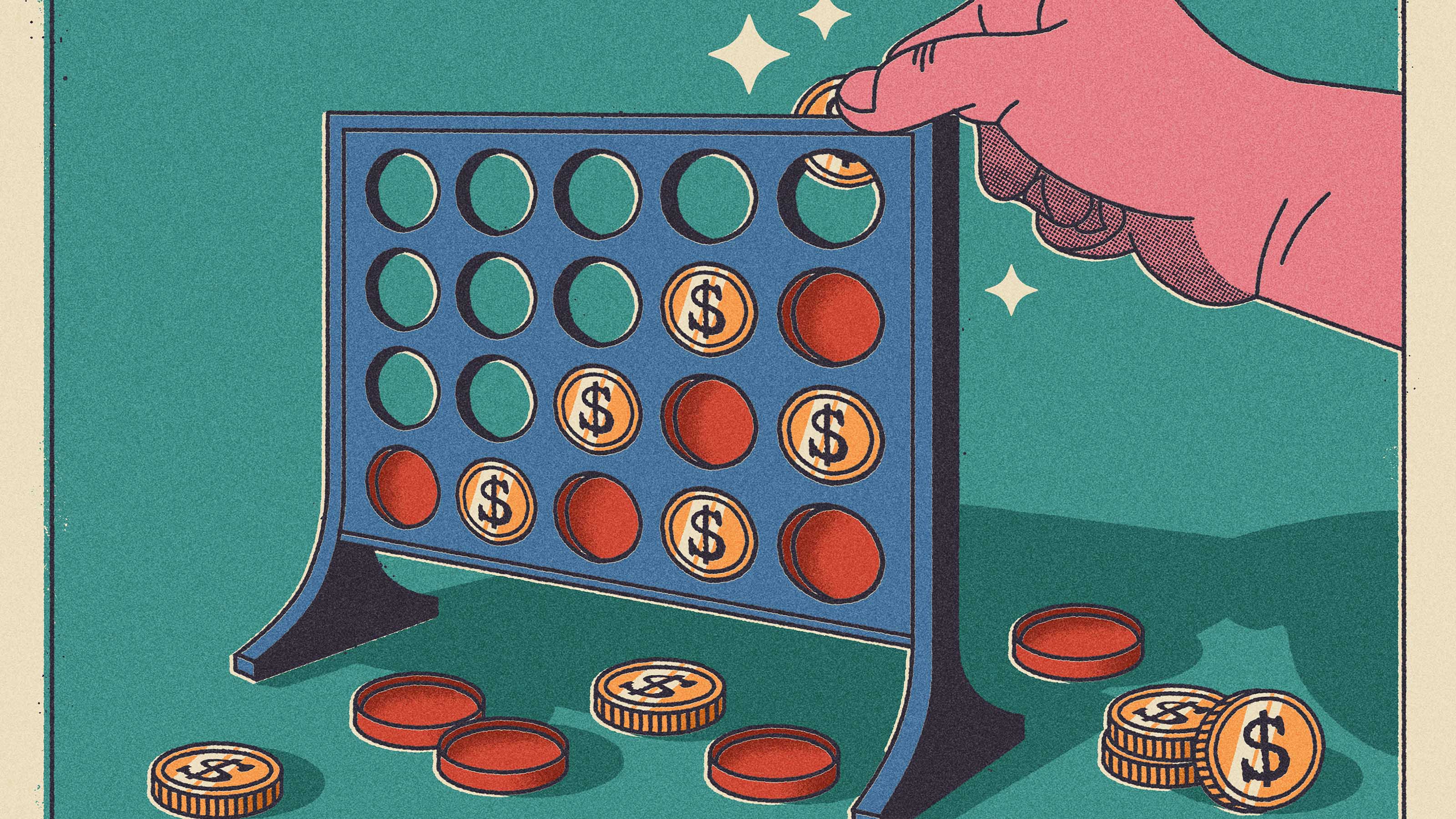Here's How I Size Up a Stock
Our Practical Investing columnist, Kathy Kristof, explains her formula for buying stocks -- the same strategy as Peter Lynch and other touted value investors.

One of the challenges of writing a monthly column is knowing when to revisit a topic I've covered before. Kiplinger’s readers made that decision easier this month after more than a dozen of you wrote to tell me you were confused about my favorite formula for buying stocks.
The column that inspired those letters was in the May issue, where I wrote about buying Costco. I like to buy shares when the company’s price-earnings ratio is less than the sum of its earnings-growth rate and its dividend yield. My goal is to find stocks that investors have mispriced—when the P in a P/E is too low, given a company’s prospects for increasing profits and its dividend payout. My formula is a version of the dividend-adjusted PEG ratio, long favored by Peter Lynch and other revered value investors.
Putting My Formula to Work
Publicly traded companies’ price-earnings ratios and dividend yields are widely reported. What I failed to mention is that I use projected earnings for the company’s current year and for the following year. You can find earnings projections at Yahoo Finance. Call up the stock and click on the tab marked “analysis.” At the top of that page are per-share earnings estimates for the current and next quarter, and the current and next year.

Sign up for Kiplinger’s Free E-Newsletters
Profit and prosper with the best of expert advice on investing, taxes, retirement, personal finance and more - straight to your e-mail.
Profit and prosper with the best of expert advice - straight to your e-mail.
At the bottom of that page, under “growth estimates,” you’ll find how fast analysts expect earnings to grow.
Before you leave this page, also take a look at the section in the middle titled “earnings history,” which shows what analysts had expected earnings to be in the recent past. What I like to see is that analysts have either been accurate or have projected low, allowing the company to “beat” the projection. If the column shows a string of negative numbers, it means analysts have overestimated profits and really don't have a handle on what to expect. It may be time to look for another stock.
If all’s well, click the tab marked “financials” and examine the company's income statement, balance sheet and cash flow statements. You want to see income that’s rising steadily; plenty of cash and short-term investments on the balance sheet; and more than enough free cash flow (the cash left after making the capital expenditures necessary to maintain the business) to cover the dividend.
Still interested? Go to the Securities and Exchange Commission’s website and search for the company’s latest SEC filings. The company’s annual report is called the 10-K. I like to make sure I understand the business and to see what management has to say about the company’s progress and prospects, which is usually in the chairman’s letter up front. I then look at the financial statements in the back, where at least three years’ worth of data is reported.
Yahoo is theoretically reporting most of the same numbers. But Yahoo often picks up “adjusted” earnings, which may exclude a laundry list of supposedly one-time items. Sometimes these adjustments are legitimate. Sometimes I think they’re essentially excuses for not doing better.
If the company has adjusted its earnings, I go back to previous 10-K reports to see whether these adjustments are truly one-time items. If they’re done routinely—and the adjustments are throwing out costs that I think are a regular part of doing business—I move on.
Before leaving the 10-K, I glance at the stock-performance chart, which shows how the company’s shares have fared against competitors over the past several years. Finally, if I’m still happy with what I see, look at the DEF 14A, also known as the proxy statement. This tells me how management is paid. I want to see a management team that isn't overpaying itself given its performance. If the company’s executives are in the top percentiles for pay (this will be noted in the compensation report) but the stock is in the bottom percentiles for performance (from the stock graph in the 10-K), there’s a problem. But if all looks good, I either buy or put the stock on a wish list to buy when I have more cash or when the price falls.
Get Kiplinger Today newsletter — free
Profit and prosper with the best of Kiplinger's advice on investing, taxes, retirement, personal finance and much more. Delivered daily. Enter your email in the box and click Sign Me Up.

-
 Customer Services are Strained at the SSA, You Should Plan Around These Federal Holidays
Customer Services are Strained at the SSA, You Should Plan Around These Federal HolidaysIf you have a question or need information from a federal agency, check the federal holiday schedule to make sure you get your business done before they close.
By Donna LeValley
-
 Stock Market Today: No 'Powell Put'? No Problem
Stock Market Today: No 'Powell Put'? No ProblemInvestors, traders and speculators look beyond both another Trump post and more signs of slowing economic activity.
By David Dittman
-
 How to Beef Up Your Portfolio Against Inflation
How to Beef Up Your Portfolio Against Inflationinvesting These sectors are better positioned to benefit from rising prices.
By Karee Venema
-
 Taxable or Tax-Deferred Account: How to Pick
Taxable or Tax-Deferred Account: How to PickInvesting for Income Use our guide to decide which assets belong in a taxable account and which go into a tax-advantaged account.
By Nellie S. Huang
-
 Smart Investing in a Bear Market
Smart Investing in a Bear Marketinvesting Here's how to make the most of today’s dicey market.
By Anne Kates Smith
-
 How to Open a Stock Market Account
How to Open a Stock Market Accountinvesting Investing can be fun, but you need a brokerage account to do it. Fortunately, it’s easy to get started.
By Rivan V. Stinson
-
 The Right Dividend Stock Fund for You
The Right Dividend Stock Fund for YouBecoming an Investor Dividend stock strategies come in many different flavors. Here's what to look for.
By Adam Shell
-
 Alternative Investments for the Rest of Us
Alternative Investments for the Rest of UsFinancial Planning These portfolio diversifiers aren't just for the wealthy.
By Adam Shell
-
 When Actively Managed Funds Are Worth It
When Actively Managed Funds Are Worth ItBecoming an Investor For some investment categories, choosing an actively managed fund makes sense.
By Adam Shell
-
 Make Your Portfolio More Defensive
Make Your Portfolio More DefensiveBecoming an Investor Risk is rising on Wall Street. Make sure you're prepared.
By Adam Shell